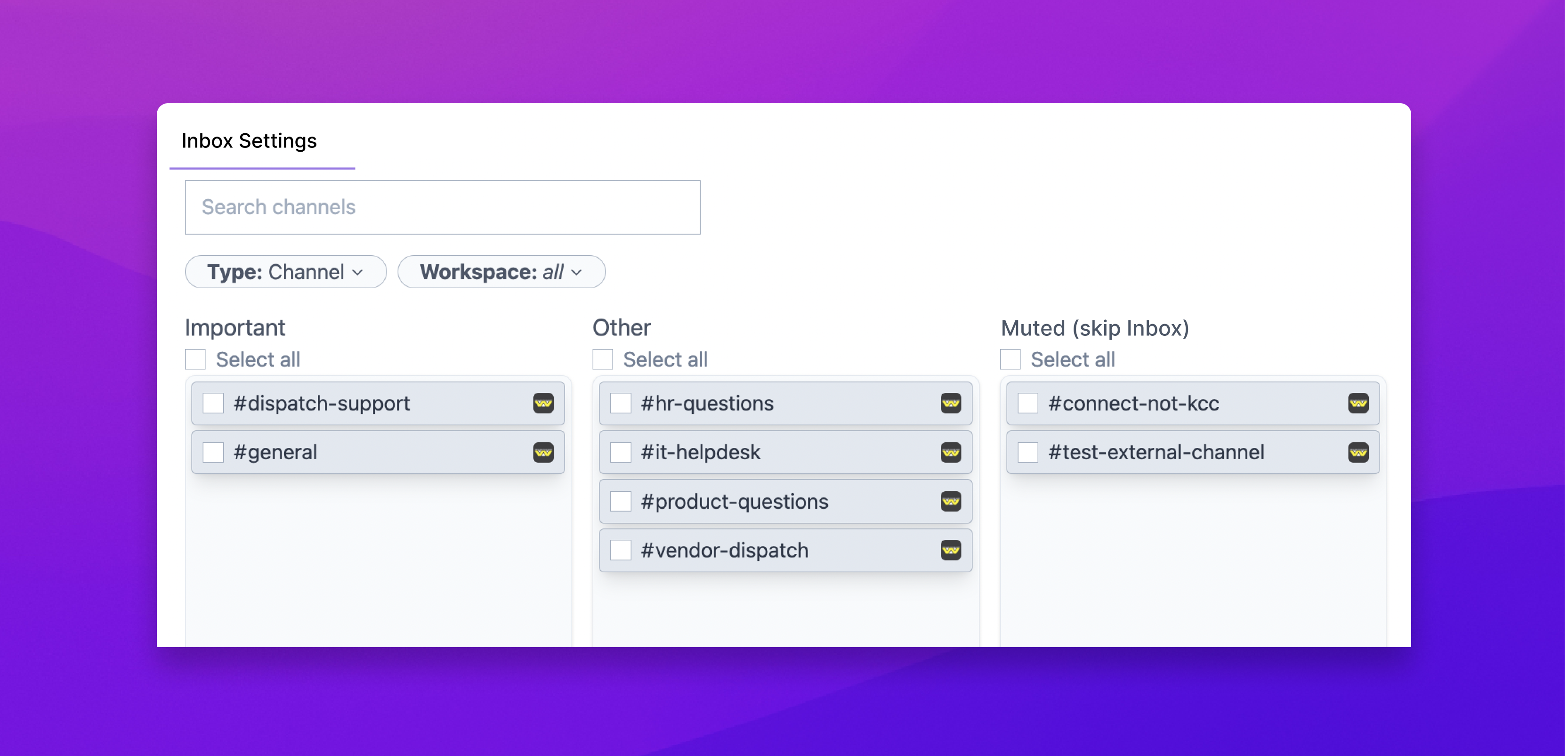
Rules are one of the most powerful features of Dispatch that let you use a comprehensive set of conditions to automatically triage messages as they come in.
Open the Rules modal by clicking the arrows icon in the bottom left corner of Dispatch, or with the “Open Rules” command in the command palette [⌘P].
Default Inboxes
The Rules modal lets you update or bulk-update the default inboxes of your channels.

Custom rules
The bottom half of the Rules modal contains custom rules.
Each custom rule has a set of conditions and a set of actions. If an incoming message matches the conditions, then the actions will run. Otherwise, the rule will be skipped.
You’ll start off with one custom rule by default that you can use as an example. This rule checks for messages containing @mentions or @channels, and moves those messages to your Important inbox, marks them not done, and unmutes them.
Rule order
The order of the rules matter because the actions of later rules may overwrite the actions of earlier rules.
Use the up and down arrows to the right of each custom rule to reorder them.
Example rules
Here are a few example rules to give you an idea for what’s possible. Don’t hesitate to reach out to us if you’d like help setting up some rules of your own!
Client channels
At Dispatch we communicate with customers through Slack Connect channels that are named #[company name]-dispatch. For example, Acme Inc.’s channel would be named #acme-dispatch.
Most of us have an inbox called “Clients” that we route all client messages to with the following rule:
.png)
Keywords
You can elevate the priority of messages containing certain key words with the “message contains text” condition. Here’s an example of a rule that looks out for my name, my initials, or ice cream and elevates the message to my Important inbox:
.png)
Mute bot spam
You can do something similar to the keyword search above to deprioritize certain messages, like from bots. Here’s a rule that looks for Jira bot notifications of actions that I’ve performed myself, and marks them done immediately. Note the use of “condition groups” to group several conditions together:
.png)
Assign my client’s messages to me
Messages in channels for clients that I manage should be immediately assigned to me, which can be accomplished with a rule like this:
.png)


